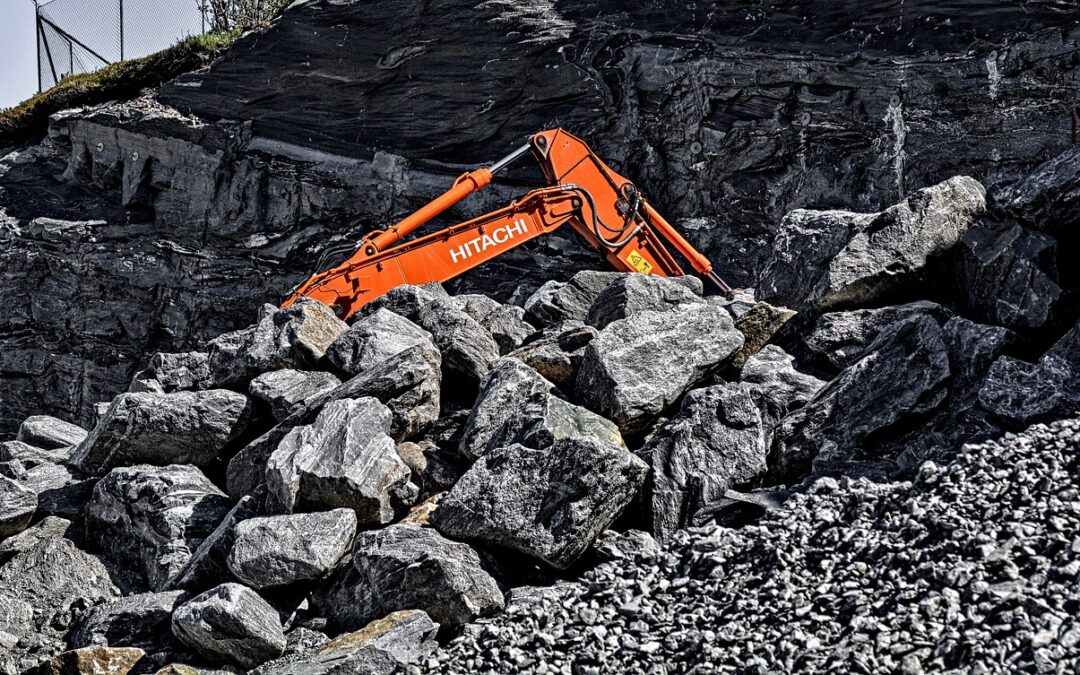Fire hazards in mines pose significant risks to both workers and the overall integrity of mining operations. Due to the unique environment of mining, such as confined spaces, flammable materials, and high temperatures, the potential for fire incidents is heightened. Effective fire prevention measures are essential for ensuring the safety of mine workers, minimizing damage to equipment, and maintaining operational continuity. In this article, we will explore the various fire hazards commonly found in mines, key contributing factors, and the importance of fire safety protocols. Additionally, we will delve into practical prevention strategies, technological advancements, and safety training programs aimed at reducing fire risks and enhancing emergency preparedness in mining environments. By addressing these concerns, we can better protect lives and prevent costly disruptions in mining operations.
Common Fire Hazards Found in Mining Operations
Mining operations, whether underground or open-pit, are prone to various fire hazards due to the nature of the materials being mined and the equipment used. The most common fire hazards in mines include the presence of combustible materials, sparks from machinery, and inadequate ventilation.
For instance, coal dust is one of the most dangerous fire hazards found in mines, as it can easily ignite and cause an explosion. Similarly, the buildup of flammable gases such as methane and carbon monoxide can also pose a significant risk if not properly ventilated. The friction generated by mining equipment, such as drills, cutters, and conveyors, can also lead to sparks that might ignite nearby combustible materials.
Properly identifying these hazards is the first step in mitigating the risk of fire. Without proper precautions, these elements can quickly lead to catastrophic events that endanger lives and disrupt mining operations.
Key Factors Contributing to Fire Risk in Mines
Several factors contribute to the high fire risk in mining operations. Poor ventilation is one of the most significant factors, as it allows flammable gases to accumulate in confined spaces, making them highly susceptible to ignition. When these gases come into contact with sparks or high temperatures from equipment, they can lead to disastrous fires or explosions.
Another factor is the improper storage and handling of combustible materials like oil, lubricants, and coal dust. These materials can easily catch fire if not stored in accordance with safety standards. Additionally, mining machinery, which operates in harsh conditions, can become a significant fire risk if it is not properly maintained. Overheating engines or electrical faults can lead to sparks, which can ignite nearby flammable substances.
By understanding these contributing factors, mining operations can take the necessary steps to reduce the likelihood of fire hazards and improve overall safety.
The Role of Proper Ventilation in Reducing Fire Hazards
Proper ventilation is a critical component in preventing fire hazards in mines. It is essential for maintaining air quality, controlling the buildup of harmful gases, and ensuring that any potential fire risks are minimized. In underground mining operations, ventilation systems help to dilute and remove dangerous gases, such as methane, which are highly flammable and can lead to explosions if allowed to accumulate.
Ventilation systems also help control the temperature in the mine. By ensuring that the temperature remains within safe limits, it reduces the risk of overheating mining equipment, which could otherwise spark a fire. Proper ventilation is not only essential for fire prevention, but it also ensures that workers have access to clean, breathable air, which is crucial for their health and safety.
Maintenance Practices to Prevent Fire Risks in Mining Equipment
Effective maintenance practices are essential in reducing the risk of fire in mining operations. Mining equipment, such as drills, conveyors, and heavy machinery, operate in harsh environments where sparks and friction can easily ignite nearby materials. Regular inspections and maintenance of machinery are crucial to ensure that any potential fire hazards are identified and addressed before they cause problems.
For example, regular checks on electrical systems and wiring can help prevent short circuits or electrical faults, which are common causes of fires in mining operations. Additionally, ensuring that lubricants and fuels are stored and handled properly can prevent the accumulation of combustible materials around equipment.
By instituting a robust maintenance schedule, mining operations can greatly reduce the risk of fire hazards and improve overall safety for workers.
Fire Prevention Measures in Underground Mining
In underground mining, fire prevention measures become even more critical due to the confined and hazardous environment. Several strategies are employed to minimize fire risks in these settings. One of the key measures is ensuring adequate ventilation, as mentioned earlier. Without proper airflow, gases can accumulate to dangerous levels, posing a significant fire and explosion risk.
Additionally, mining operations implement fire-resistant barriers and fire suppression systems in underground mines. These systems are designed to contain fires and prevent them from spreading, giving workers more time to evacuate or extinguish the flames. Regular fire drills and ensuring that all mining personnel are trained in fire safety procedures are also critical components of fire prevention in underground mining.
Technological Advancements in Fire Prevention for Mines
Technological advancements have played a significant role in improving fire prevention in mining operations. One of the most innovative developments is the use of automated fire detection systems, which can quickly identify the presence of smoke or heat in real-time. These systems can trigger an alarm and activate fire suppression systems before the fire escalates, providing crucial time for workers to evacuate and for the fire to be controlled.
Another technological advancement is the use of drones and robotic equipment to conduct fire risk assessments in hard-to-reach areas of the mine. These tools can be used to inspect mining sites for potential fire hazards without putting workers in danger.
By incorporating these advanced technologies, mining operations can significantly reduce the risk of fire and ensure a safer working environment for all.
Fire Detection Systems: Early Warning for Mine Safety
Fire detection systems are vital for ensuring the safety of mining operations. Early detection is crucial in preventing fires from escalating into major disasters. These systems use a combination of sensors, such as smoke detectors, temperature sensors, and gas sensors, to monitor the mine’s environment in real-time.
Once a fire or the presence of flammable gases is detected, the system immediately alerts the control room, allowing for a quick response. Some advanced fire detection systems are even linked to automatic fire suppression systems, which activate to control the fire before it spreads. This early warning and immediate response capability is key to maintaining mine safety and preventing fatalities.
Training and Safety Protocols for Mine Workers
Training is a critical element in preventing and responding to fires in mines. All mining workers should receive comprehensive training on fire hazards, emergency evacuation procedures, and the proper use of fire suppression equipment. Regular safety drills are also essential to ensure that workers are prepared to respond quickly and efficiently in the event of a fire.
Safety protocols should be clearly defined and regularly reviewed to ensure that all workers are aware of their roles in the event of a fire. In addition to fire safety, workers should be trained to recognize potential fire hazards in their work environment and report them to supervisors immediately.
The Importance of Regular Fire Drills and Safety Audits
Regular fire drills are a crucial component of any comprehensive fire safety program. These drills ensure that all workers know what to do in the event of a fire and can evacuate the mine safely. Fire drills should be conducted at least once a year and should include different scenarios, such as a fire in a confined space or a gas leak.
Safety audits are also essential for identifying potential fire hazards and ensuring that fire safety measures are being properly followed. Audits should include reviews of ventilation systems, fire suppression systems, and worker compliance with safety protocols. By conducting regular audits, mining operations can continuously improve their fire safety programs and reduce the risk of accidents.
Emergency Response and Evacuation Plans in Case of Fire
An effective emergency response plan is essential for any mining operation. In the event of a fire, miners must be able to evacuate quickly and safely. The plan should include clearly marked evacuation routes, emergency exits, and assembly points where workers can be accounted for.
Additionally, emergency responders should be trained to handle mining-specific fire scenarios, as underground fires present unique challenges. Having a well-practiced and well-communicated emergency response plan can save lives and minimize the damage caused by a fire.
Lessons Learned from Past Mine Fires
Past mine fires have provided valuable lessons for improving fire safety in the industry. For example, the Pike River Mine disaster in New Zealand highlighted the importance of having adequate fire detection and ventilation systems. The tragedy led to significant changes in mine safety regulations worldwide, including stricter guidelines for fire suppression systems and emergency response protocols.
By analyzing past incidents and learning from them, mining companies can avoid making the same mistakes and improve fire safety measures across the industry.

Legal and Regulatory Standards for Fire Safety in Mining
Mining operations are subject to a variety of legal and regulatory standards concerning fire safety. Regulatory bodies such as the Mine Safety and Health Administration (MSHA) in the United States and the International Labour Organization (ILO) set guidelines and regulations for fire prevention in mines.
These standards mandate the use of fire detection systems, ventilation control, and emergency response protocols to ensure that mining companies comply with safety regulations. Compliance with these standards is crucial not only for ensuring the safety of workers but also for avoiding fines and legal penalties.
Protecting Lives and Operations with Comprehensive Fire Safety Strategies
Identifying and preventing fire hazards in mines is a critical part of maintaining a safe and efficient mining operation. By implementing proper ventilation systems, performing regular maintenance, adopting advanced fire detection technologies, and ensuring thorough training and safety protocols, mining companies can greatly reduce the risk of fire hazards. With the right strategies in place, mines can be made safer, protecting both workers and operations from the devastating effects of fire.

